Step up your sandwich and toast game with this homemade potato bread recipe! This bread is tender, soft, and has a beautiful fluffy texture. With a base of mashed potatoes – make them fresh, or use up leftovers – along with milk, sugar, and butter, this enriched bread is flavorful and moist but still impressively versatile. It is as tasty with a swipe of your favorite jam as it is piled high with your preferred lunch meat.
Not to be confused with Irish potato bread or an Irish dish that is made by pan-frying a shredded potato and flour mixture, this bread resembles common sandwich bread but has a slightly denser texture, a lightly sweet finish, and a pale yellow color. It is the perfect afternoon baking project that will make your home smell delicious and treat your friends and family! For more homemade bread recipes, check out my recipe for sourdough bread, homemade artisan bread, and challah recipe.
What You Need to Make This Recipe
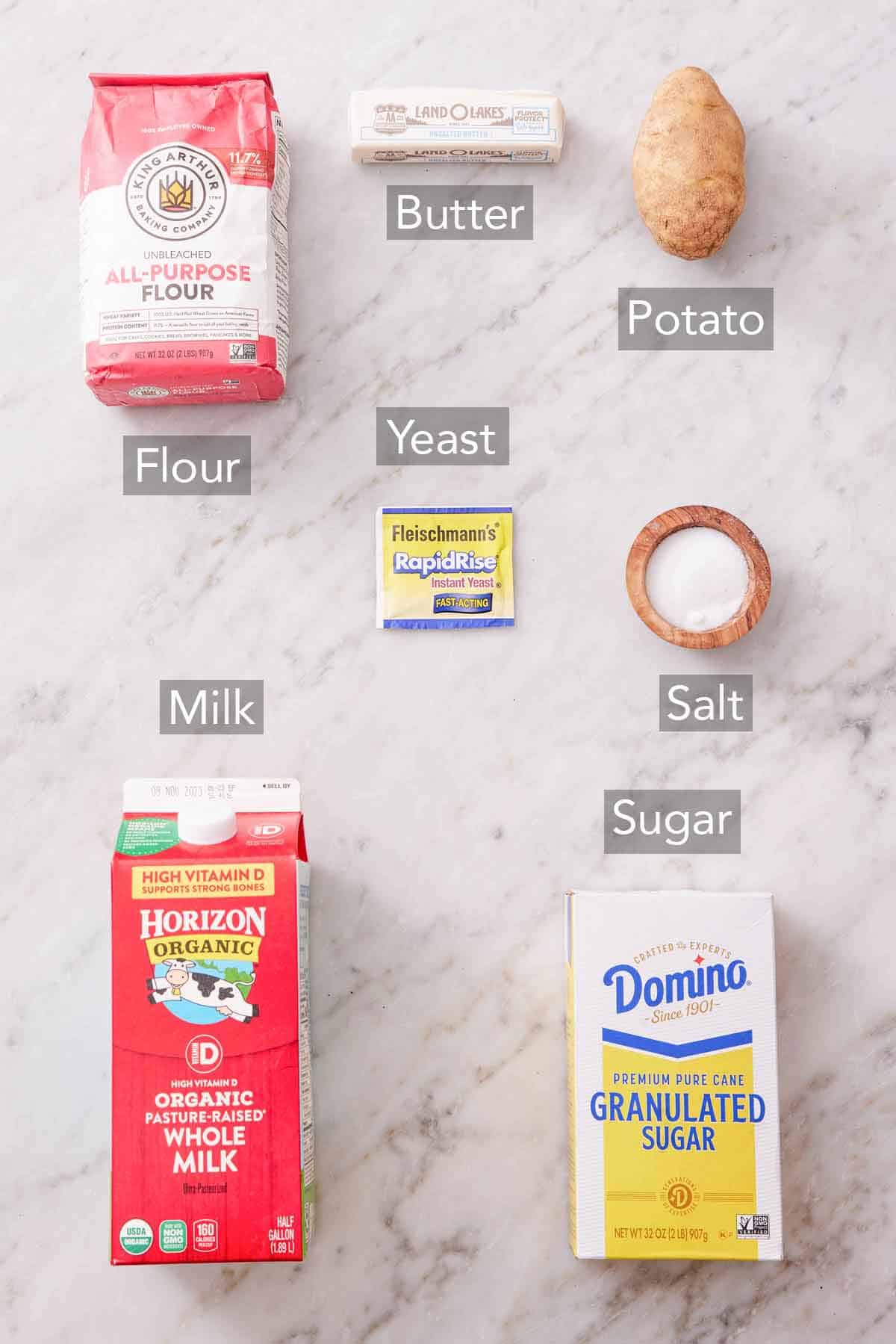
Russet Potatoes – are the most common version of potatoes with light brown skin, also often referred to as Idaho potatoes. Choose potatoes that have smooth skin and firm consistency. You will need only ½ pound (225 grams), or about one large potato.
Milk – use your milk of choice; however, whole milk or 2% milk will add the most flavor. Warm the milk to 110-115°F or until warm but not hot to the touch. If it isn’t warm enough, it may not activate the yeast.
Instant Yeast – you will need 1 packet of instant yeast. Also known as quick-rise or rapid-rise yeast, instant yeast is a beginner-friendly form of yeast that doesn’t require blooming the yeast in liquids before adding dry ingredients, and it also rises faster than active dry yeast. If you purchase a large bulk package of the yeast, you will need 2¼ teaspoons of it. Extra or leftover yeast keeps freshest in the refrigerator.
All-Purpose Flour – common AP flour is all you need; bread flour isn’t required for this recipe. For best results, measure the flour by weighing it on a food scale. You will need 660 grams. If you don’t have a food scale, the second best way to measure it is by spooning it into measuring cups and leveling off the top.
Butter – unsalted butter, softened to room temperature. If substituting salted butter, reduce the added salt in the recipe by a pinch.
Sugar – white granulated sugar is best for its pure and light sweetness. Sugar helps the yeast activate as well as adds a light and homey sweetness to the homemade potato bread recipe.
How to Make Potato Bread
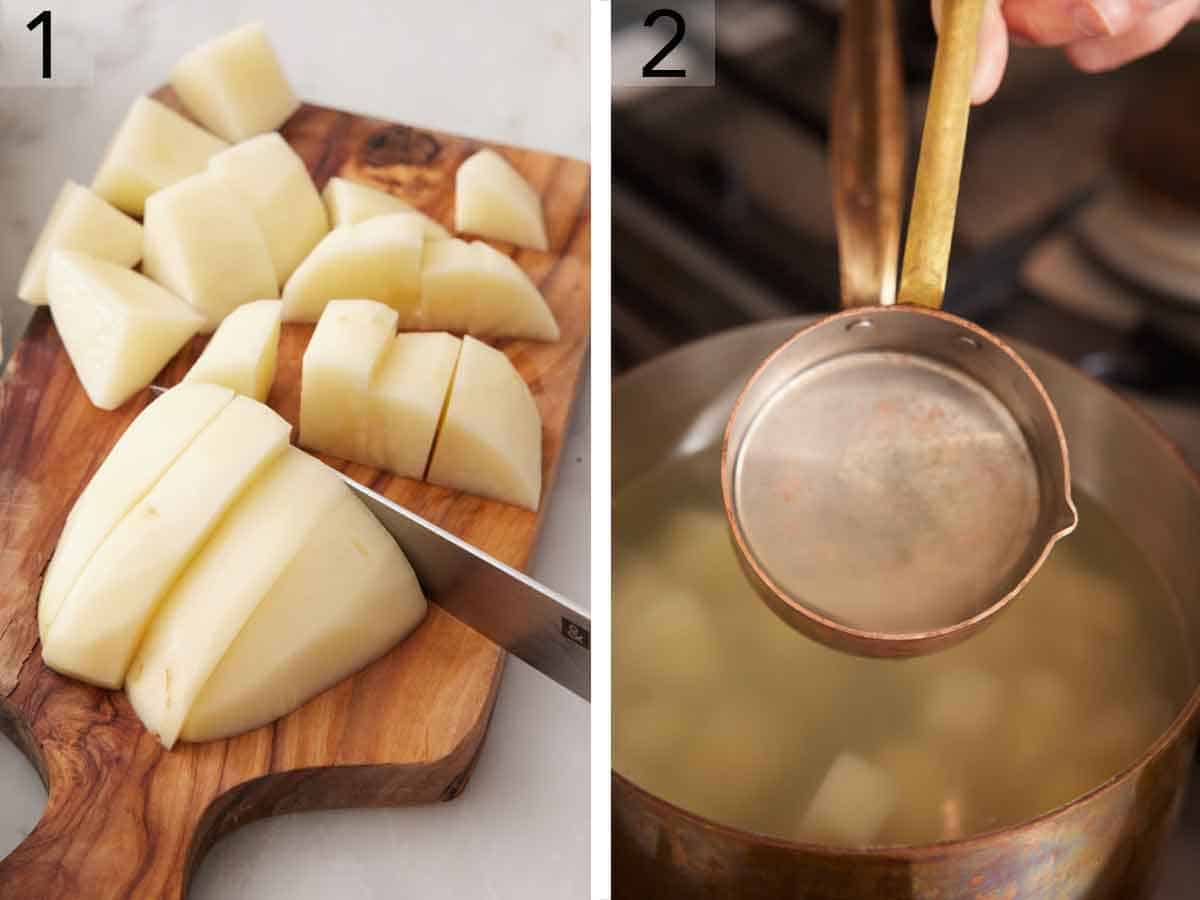
1. Peel and cut potatoes into ½-inch thick slices. Transfer to a medium pot, and fill with water until potatoes are covered by about an inch. Bring water to a boil over medium-high until potatoes are fork tender, about 10 minutes.
2. Drain potatoes, reserving ½ cup of the water.
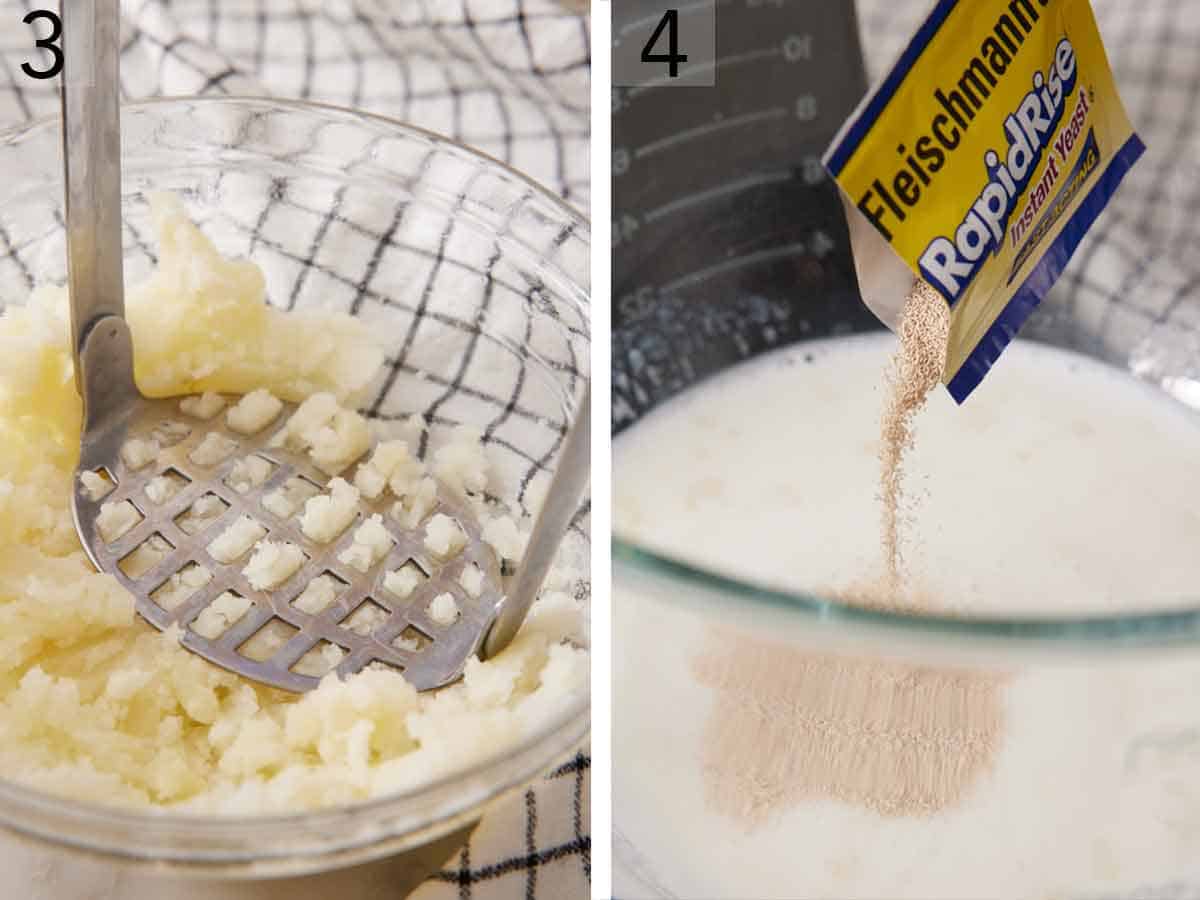
3. Mash the potatoes with a potato masher until smooth, and measure out 1 cup of mashed potatoes. Allow the mashed potatoes to cool slightly, 5 to 10 minutes.
4. Add the milk, yeast, and potato water to the mixing bowl of a stand mixer.
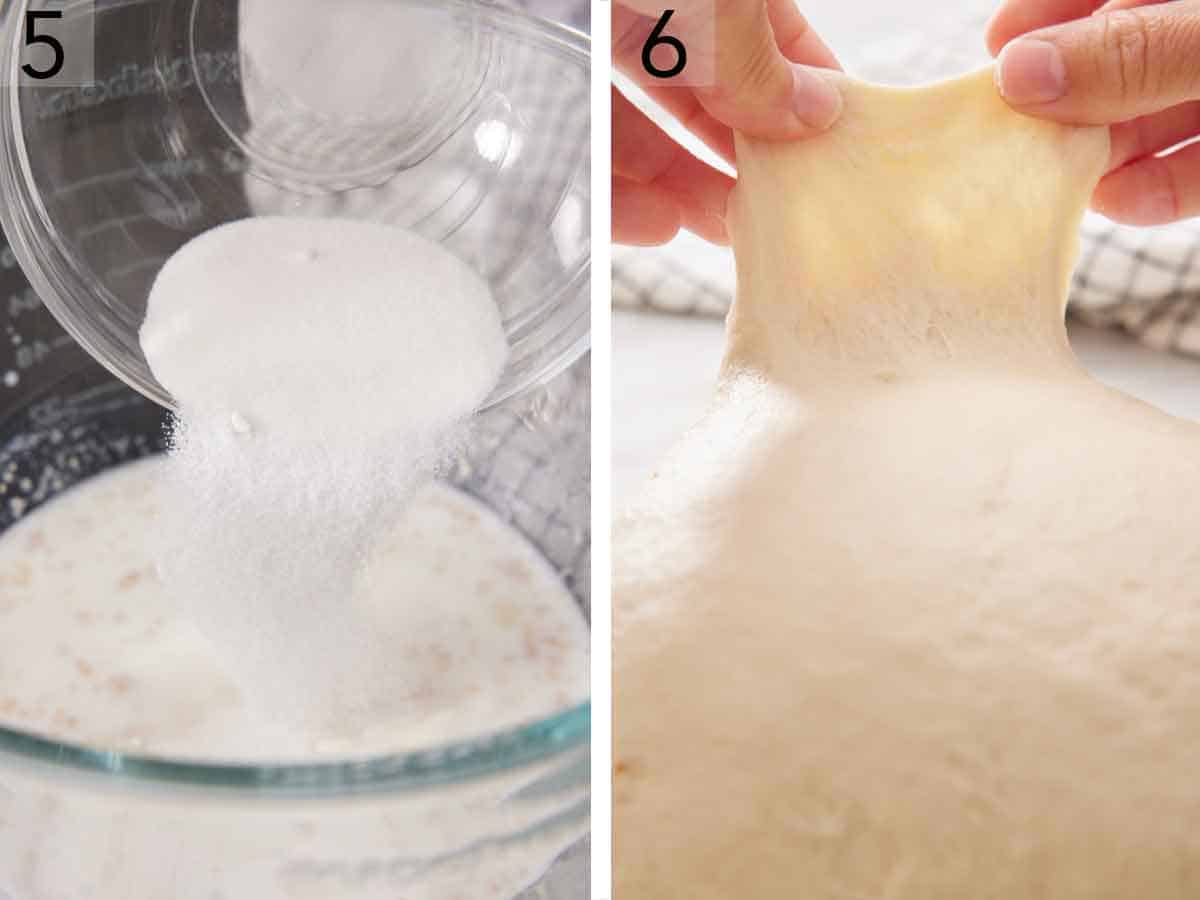
5. Whisk in the sugar and mashed potatoes until combined. Add the flour, salt, and butter, and using the paddle attachment on low speed, mix until just combined.
6. Using the dough hook attachment on low speed, knead the dough until smooth, tacky, and passes the windowpane test, or when the dough is smooth and elastic and light shines through it when stretched, or for 5 to 8 minutes.
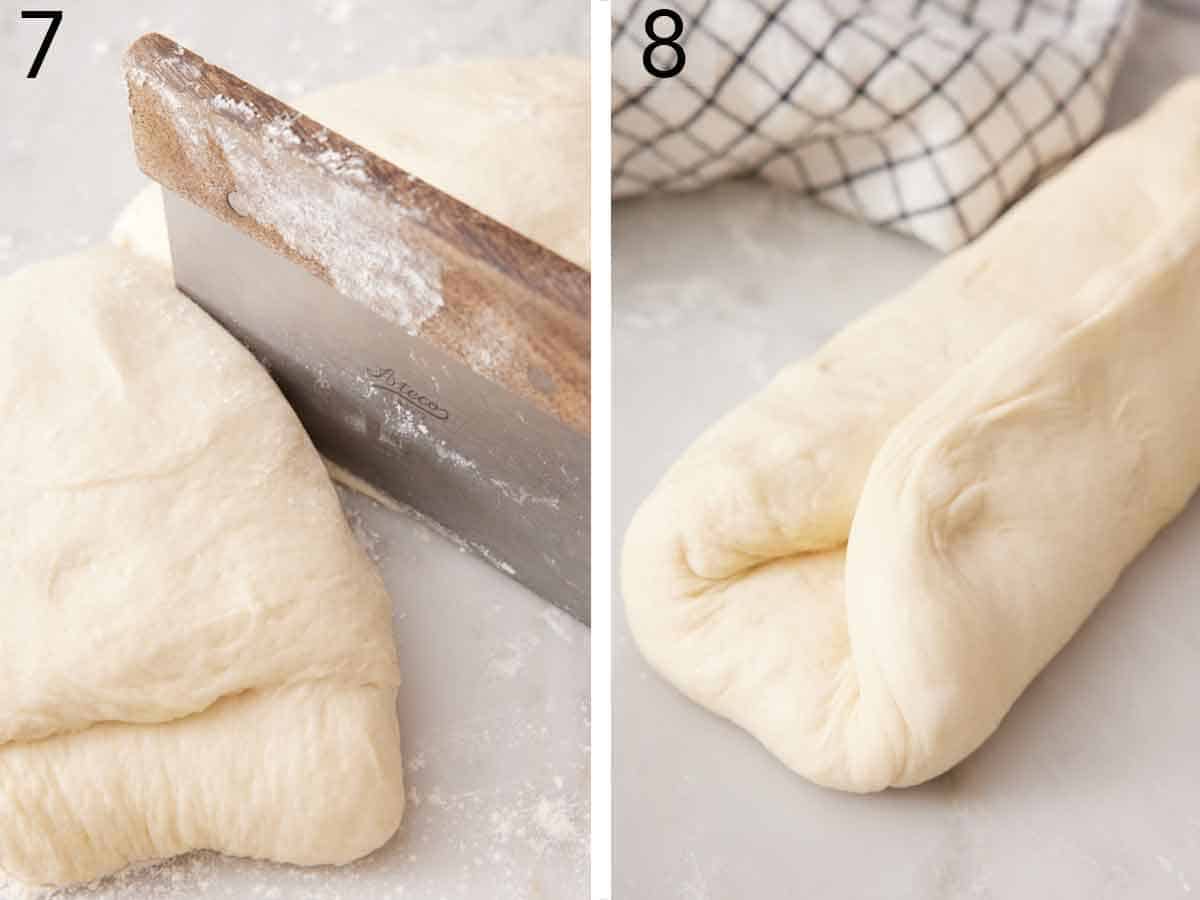
7. Preheat oven to 350°F. Grease two 9×5-inch loaf pans. Oil a large bowl with olive oil and transfer the dough to it. Cover the bowl and let the dough rise in a warm place until doubled in size, about 45 minutes. Punch down the risen dough. On a lightly floured surface, divide the dough into two equal pieces (about 706g each).
8. Gently press the first portion of dough into a 9×6-inch rectangle. Starting on one long side, fold the dough in on itself in thirds, pinching the seam together to seal it together. Reshape into a 9-inch log, if needed. Place into the prepared loaf pan, seam side down, and repeat with the second portion of dough. Loosely cover both loaves and let rise again until well puffed, about 20 minutes. Uncover and bake until the tops are golden brown and the internal temperature reaches 190°F, or for 35 to 40 minutes. Let cool for a few minutes in the pan, then remove and cool completely to room temperature on a wire rack.
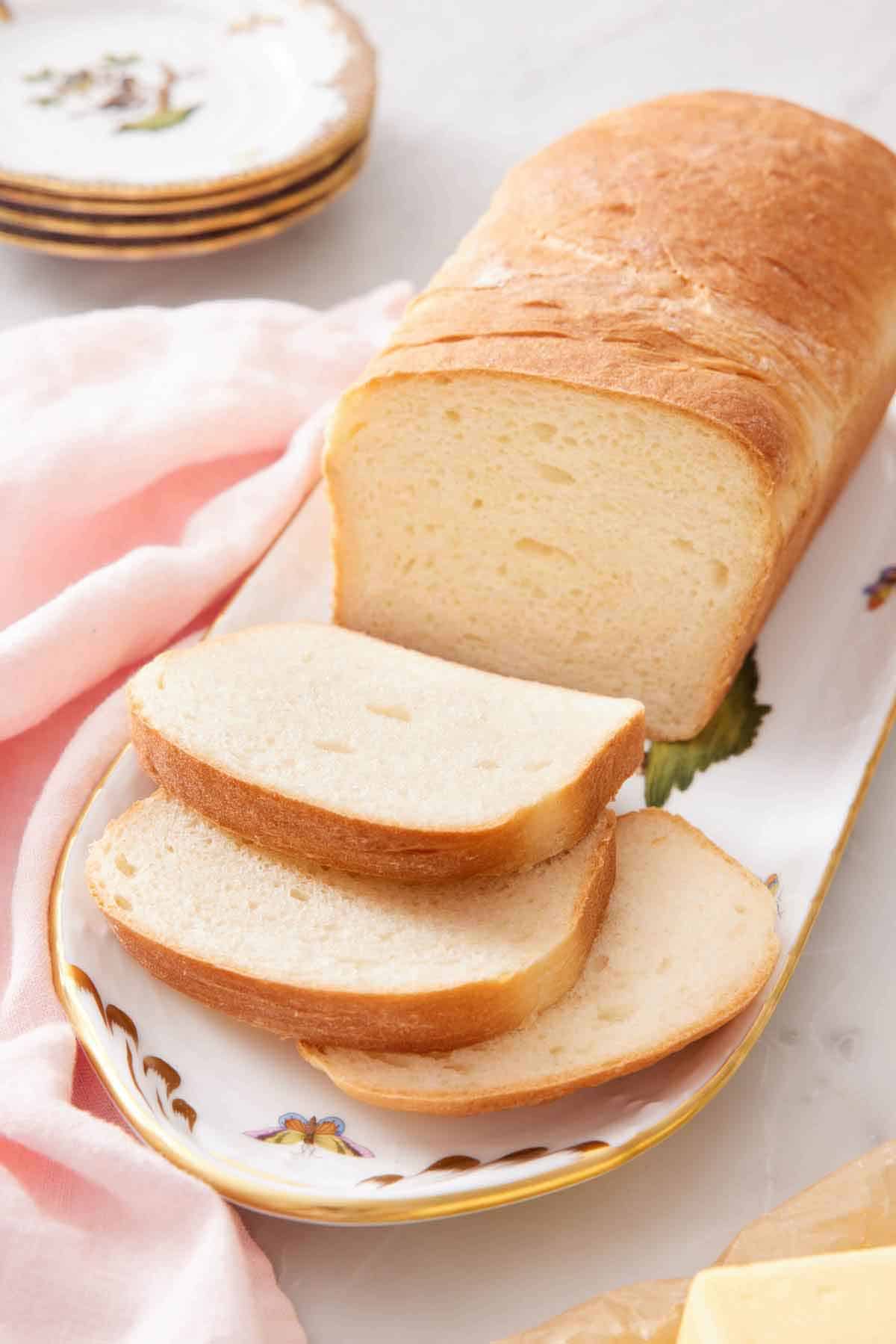
Pro Tips For Making This Recipe
- Reserve the potato water. Scoop out ½ cup of the potato boiling water before draining the potatoes. It will add an additional sweet and starchy flavor to the bread, as well as moisture. If you accidentally drain the water out before reserving the water, you can whisk a teaspoon of extra mashed potato into a ½ cup of warm water as a substitute.
- Mash the potatoes until smooth. The best mashed potatoes for this recipe are smooth and creamy; you don’t want large chunks. Make smooth potatoes with a potato masher or a potato ricer.
- Make this recipe with leftover mashed potatoes. If you have plain mashed potatoes leftover or baked potatoes that you can mash, skip cooking the russets and swap in 1 cup of mashed potatoes. Just warm them up before using them.
- Test the dough with the windowpane test. You will know that the dough is sufficiently kneaded when it passes the windowpane test. Here is how to do it: pinch off a 1-inch ball, then stretch it between your fingers into a square. If the dough doesn’t break but is thin enough to let light pass through, it’s ready. If it breaks when stretched, continue kneading for another minute and repeat the test.
- Use a food scale for even-sized loaves. If desired, weigh the dough as you divide it into two loaves to ensure that they are even. Each loaf of bread dough should weigh approximately 700 grams.
- Optional: knead the dough by hand. You can knead the dough without a stand mixer if you don’t have one or prefer to do it by hand. To do so, whisk the wet ingredients together by hand. Add the flour and butter and blend together on low speed using a hand mixer. Once combined, turn the dough out onto a lightly floured surface and knead manually for 5-8 minutes or until the dough passes the windowpane test (see notes above).
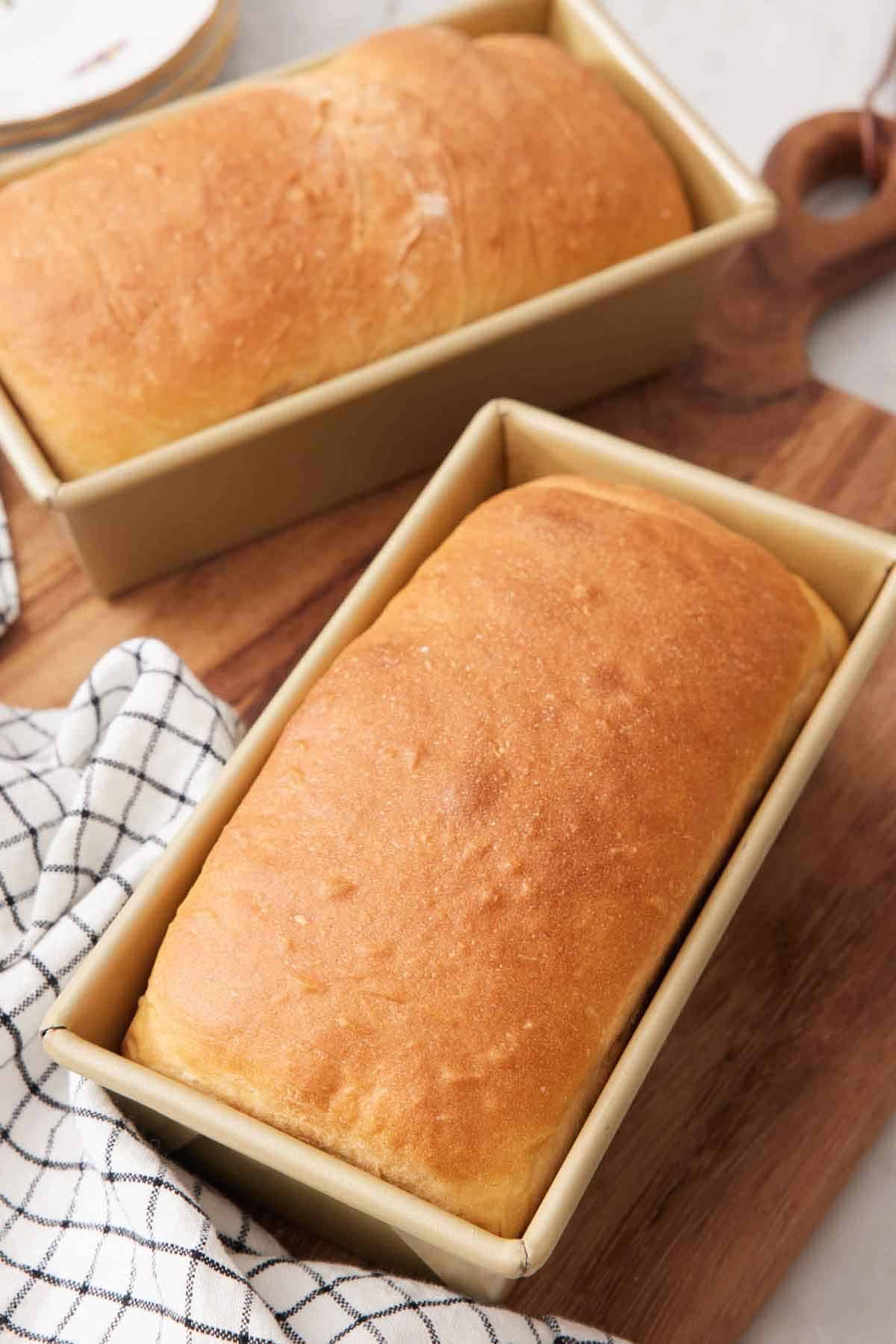
Frequently Asked Questions
Leftover bread keeps covered in an airtight container at room temperature for 2-3 days, though it is best enjoyed within the first 24 hours. The bread can be frozen in a freezer-safe container for up to 3 months, just bring the bread fully to room temperature before freezing. You can freeze full or sliced loaves. Defrost the bread at room temperature for 20 minutes to 1 hour, or until thawed through.
Serve this bread anywhere you typically enjoy sandwich or artisanal bread. Enjoy it warm or toasted with whipped butter, strawberry jam, or even apple butter for a light breakfast or fresh-baked snack. Make any of your favorite sandwiches with the bread, or use it to add a special homemade touch to English tea sandwiches! It’s also my go-to recipe for making turkey sandwiches with leftover Thanksgiving turkey.
Proof, or let the dough rise, covered with plastic wrap or a large dish towel in an oiled large bowl. The ideal proofing temperature is around 75-81 degrees Fahrenheit, so you will want to place the bowl in a non-drafty location that is about this temperature. On top of the fridge, in an unheated oven with the light on, or in a warmer corner of the house are all great options. Punch down the bread after the first proof and give the bread its final rise until well puffed. With the correct temperature, the first proofing of this dough will take about 45 minutes, and the second proofing should take about 20.
If you’ve tried this potato bread recipe, then don’t forget to rate the recipe and let me know how you got on in the comments below, I love hearing from you!
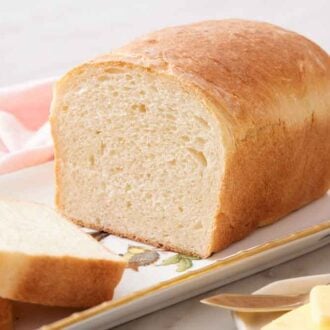
Potato Bread
Video
Ingredients
- ½ pound russet potatoes (225g)
- 1 cup warm milk (110-115°F) (240mL)
- ¼ cup granulated sugar (50g)
- 1 (0.25-ounce/7g) packet instant yeast
- 5½ cups all-purpose flour (660g)
- 2 teaspoons salt
- ⅓ cup unsalted butter softened (75g)
Instructions
- Peel and cut potatoes into ½-inch thick slices. Transfer to a medium pot, and fill with water until potatoes are covered by about an inch. Bring water to a boil over medium-high until potatoes are fork tender, about 10 minutes.
- Drain potatoes, reserving ½ cup of the water. Mash the potatoes with a potato masher until smooth, and measure out 1 cup of mashed potatoes. (Save any remaining mashed potatoes for another use.) Allow the mashed potatoes to cool slightly, 5 to 10 minutes.
- In the bowl of a stand mixer, whisk together the warm mashed potatoes, milk, sugar, yeast, and potato water until combined. Add the flour, salt, and butter, and using the paddle attachment on low speed, mix until just combined.
- Using the dough hook attachment on low speed, knead the dough until smooth, tacky, and passes the windowpane test, 5 to 8 minutes. (To test the dough, pinch off a 1-inch ball, then stretch it between your fingers into a square. If the dough doesn’t break but is thin enough to let light pass through, it’s ready. If it breaks when stretched, continue kneading for another minute and repeat the test.)
- Transfer the dough to a lightly oiled large bowl, cover, and let rise in a warm place until doubled in size, about 45 minutes.
- Preheat oven to 350°F. Grease two 9×5-inch loaf pans.
- Punch down the risen dough. On a lightly floured surface, divide the dough into 2 equal pieces (about 706g each). Gently press the first portion of dough into a 9×6-inch rectangle. Starting on one long side, fold the dough in on itself in thirds, pinching the seam together to seal it together. Reshape into a 9-inch log, if needed. Place into the prepared loaf pan, seam side down, and repeat with the second portion of dough. Loosely cover both loaves and let rise again until well puffed, about 20 minutes.
- Uncover and bake until the tops are golden brown, 35 to 40 minutes. Let cool for a few minutes in the pan, then remove and cool completely on a wire rack. Store covered at room temperature for 3 to 5 days.
Notes
- Reserve the potato water. Scoop out ½ cup of the potato boiling water before draining the potatoes. It will add an additional sweet and starchy flavor to the bread, as well as moisture. If you accidentally drain the water out before reserving the water, you can whisk a teaspoon of extra mashed potato into a ½ cup of warm water as a substitute.
- Mash the potatoes until smooth. The best mashed potatoes for this recipe are smooth and creamy; you don’t want large chunks. Make smooth potatoes with a potato masher or a potato ricer.
- Make this recipe with leftover mashed potatoes. If you have plain mashed potatoes leftover or baked potatoes that you can mash, skip cooking the russets and swap in 1 cup of mashed potatoes. Just warm them up before using them.
- Test the dough with the windowpane test. You will know that the dough is sufficiently kneaded when it passes the windowpane test. Here is how to do it: pinch off a 1-inch ball, then stretch it between your fingers into a square. If the dough doesn’t break but is thin enough to let light pass through, it’s ready. If it breaks when stretched, continue kneading for another minute and repeat the test.
- Use a food scale for even-sized loaves. If desired, weigh the dough as you divide it into two loaves to ensure that they are even. Each loaf of bread dough should weigh approximately 700 grams.
- Optional: knead the dough by hand. You can knead the dough without a stand mixer if you don’t have one or prefer to do it by hand. To do so, whisk the wet ingredients together by hand. Add the flour and butter and blend together on low speed using a hand mixer. Once combined, turn the dough out onto a lightly floured surface and knead manually for 5-8 minutes or until the dough passes the windowpane test (see notes above).



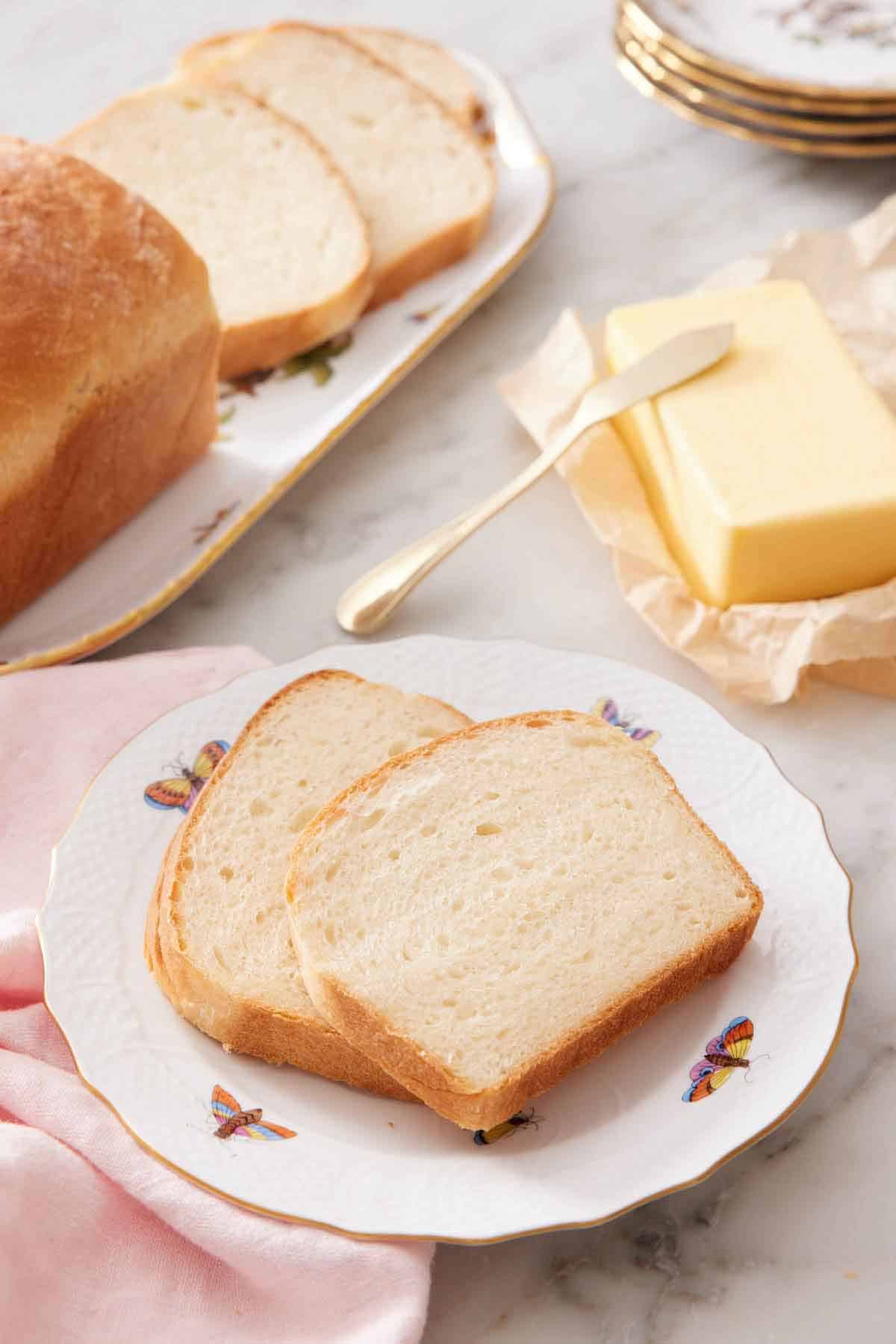
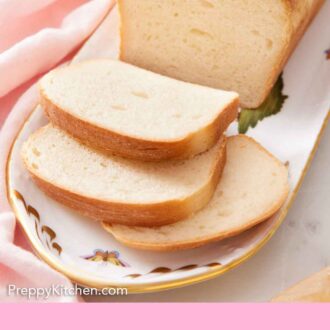
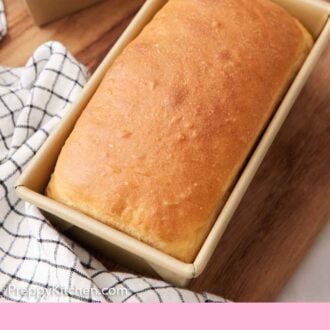
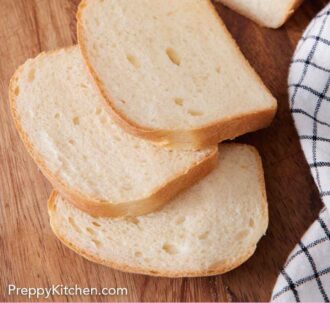
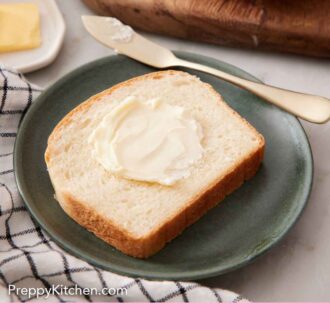
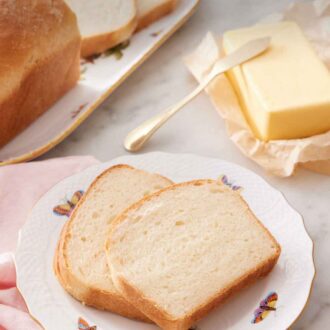

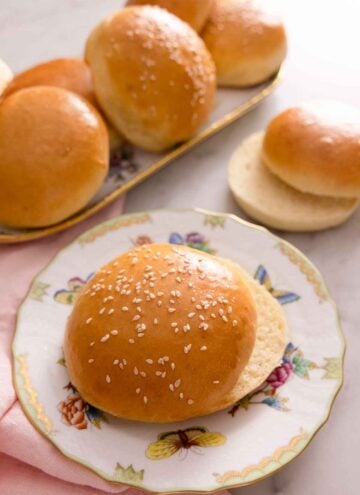
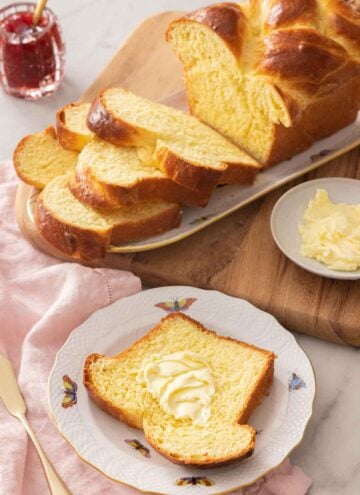
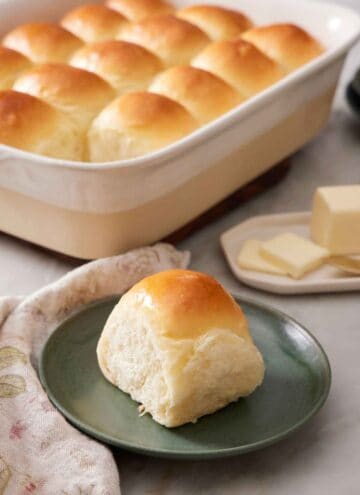

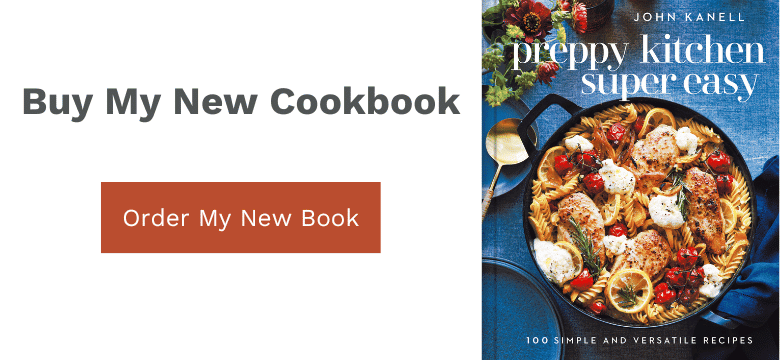
Leave a Reply